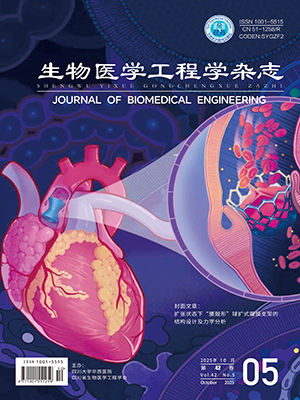| 1. |
Jonker M, Nooij F J. The internal image-like anti-idiotypic response to a CD3-specific monoclonal antibody in primates is dependent on the T cell-binding properties of the injected antibody. Eur J Immunol, 1987, 17(10): 1519-1522..
|
| 2. |
Salminen A. Hypoperfusion is a potential inducer of immunosuppressive network in Alzheimer's disease. Neurochem Int, 2021, 142: 104919..
|
| 3. |
Mao M, Xu Y, Zhang X Y, et al. MicroRNA-195 prevents hippocampal microglial/macrophage polarization towards the M1 phenotype induced by chronic brain hypoperfusion through regulating CX3CL1/CX3CR1 signaling. J Neuroinflammation, 2020, 17(1): 244..
|
| 4. |
Li M, Meng N, Guo X, et al. Dl-3-n-butylphthalide promotes remyelination and suppresses inflammation by regulating AMPK/SIRT1 and STAT3/NF-κB signaling in chronic cerebral hypoperfusion. Front Aging Neurosci, 2020, 12: 137..
|
| 5. |
Chen X, Holtzman D M. Emerging roles of innate and adaptive immunity in Alzheimer’s disease. Immunity, 2022, 55(12): 2236-2254..
|
| 6. |
Tukacs V, Mittli D, Hunyadi-Gulyás É, et al. Chronic cerebral hypoperfusion-induced disturbed proteostasis of mitochondria and MAM is reflected in the CSF of rats by proteomic analysis. Mol Neurobiol, 2023, 60(6): 3158-3174..
|
| 7. |
Kim M, Kim B, Kim J I, et al. Mumefural improves recognition memory and alters ERK-CREB-BDNF signaling in a mouse model of chronic cerebral hypoperfusion. Nutrients, 2023, 15(14): 3271..
|
| 8. |
Warde-Farley D, Donaldson S L, Comes O, et al. The GeneMANIA prediction server: biological network integration for gene prioritization and predicting gene function. Nucleic Acids Res, 2010, 38: W214-W220..
|
| 9. |
Hainsworth A H, Allan S M, Boltze J, et al. Translational models for vascular cognitive impairment: a review including larger species. BMC Med, 2017, 15(1): 16..
|
| 10. |
Chen Y, Liu Q, Liu J, et al. Revealing the modular similarities and differences among Alzheimer’s disease, vascular dementia, and Parkinson’s disease in genomic networks. Neuromolecular Med, 2022, 24(2): 125-138..
|
| 11. |
Sun Z, Gao C, Gao D, et al. Reduction in pericyte coverage leads to blood–brain barrier dysfunction via endothelial transcytosis following chronic cerebral hypoperfusion. Fluids Barriers CNS, 2021, 18(1): 21..
|
| 12. |
Farkas E, Luiten P G M, Bari F. Permanent, bilateral common carotid artery occlusion in the rat: a model for chronic cerebral hypoperfusion-related neurodegenerative diseases. Brain Res Rev, 2007, 54(1): 162-180..
|
| 13. |
Lee J, Lee J, Song M, et al. NXP031 improves cognitive impairment in a chronic cerebral hypoperfusion-induced vascular dementia rat model through Nrf2 Signaling. Int J Mol Sci, 2021, 22(12): 6285..
|
| 14. |
Qu C, Song H, Shen J, et al. Mfsd2a reverses spatial learning and memory impairment caused by chronic cerebral hypoperfusion via protection of the blood–brain barrier. Front Neurosci, 2020, 14: 461..
|
| 15. |
Procter T V, Williams A, Montagne A. Interplay between brain pericytes and endothelial cells in dementia. Am J Pathol, 2021, 191(11): 1917-1931..
|
| 16. |
Zhang D, Cao Y, Mu J, et al. Inflammatory biomarkers and cerebral small vessel disease: a community-based cohort study. Stroke Vasc Neurol, 2022, 7(4): 302-309..
|
| 17. |
Xu J J, Guo S, Xue R, et al. Adalimumab ameliorates memory impairments and neuroinflammation in chronic cerebral hypoperfusion rats. Aging (Albany NY), 2021, 13(10): 14001-14014..
|
| 18. |
Baik S H, Selvaraji S, Fann D Y, et al. Hippocampal transcriptome profiling reveals common disease pathways in chronic hypoperfusion and aging. Aging (Albany NY), 2021, 13(11): 14651-14674..
|
| 19. |
Wang Y H, Cheng C, Zuo X Z, et al. Inhibition of A2AR gene methylation alleviates white matter lesions in chronic cerebral hypoperfusion rats. Eur Rev Med Pharmacol Sci, 2022, 26(8): 2702-2711..
|
| 20. |
Poh L, Fann D Y, Wong P, et al. AIM2 inflammasome mediates hallmark neuropathological alterations and cognitive impairment in a mouse model of vascular dementia. Mol Psychiatry, 2021, 26(8): 4544-4560..
|
| 21. |
Zhang Z, Guo Z, Jin P, et al. Transcriptome profiling of hippocampus after cerebral hypoperfusion in mice. J Mol Neurosci, 2023, 73(6): 423-436..
|
| 22. |
Li K, Du Y, Li L, et al. Bioinformatics approaches for anti-cancer drug discovery. Curr Drug Targets, 2020, 21(1): 3-17..
|
| 23. |
Kortum R L, Rouquette-Jazdanian A K, Samelson L E. Ras and extracellular signal-regulated kinase signaling in thymocytes and T cells. Trends Immunol, 2013, 34(6): 259-268..
|
| 24. |
Li S, Zhou B, Xue M, et al. Macrophage-specific FGF12 promotes liver fibrosis progression in mice. Hepatology, 2023, 77(3): 816-833..
|
| 25. |
Deng J, Xu T, Yang J, et al. Sema7A, a brain immune regulator, regulates seizure activity in PTZ-kindled epileptic rats. CNS Neurosci Ther, 2020, 26(1): 101-116..
|
| 26. |
Somekh I, Marquardt B, Liu Y, et al. Correction to: novel mutations in RASGRP1 are associated with immunodeficiency, immune dysregulation, and EBV-induced lymphoma. Clin Immunol, 2018, 38(6): 711..
|
| 27. |
Baars M J D, Douma T, Simeonov D R, et al. Dysregulated RASGRP1 expression through RUNX1 mediated transcription promotes autoimmunity. Eur J Immunol, 2021, 51(2): 471-482..
|
| 28. |
Pierret P, Vallée A, Mechawar N, et al. Cellular and subcellular localization of Ras guanyl nucleotide-releasing protein in the rat hippocampus. Neuroscience, 2001, 108(3): 381-390..
|
| 29. |
Felix T F, Lopez Lapa R M, de Carvalho M, et al. MicroRNA modulated networks of adaptive and innate immune response in pancreatic ductal adenocarcinoma. PLoS One, 2019, 14(5): e0217421..
|
| 30. |
Qi Y, Lai Y L, Shen P C, et al. Identification and validation of a miRNA-based prognostic signature for cervical cancer through an integrated bioinformatics approach. Sci Rep, 2020, 10(1): 22270..
|




